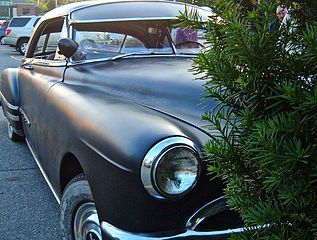The Future of Transportation
I know I’ve mentioned that occasionally, we’re lucky enough here at 2GreenEnergy to be the beneficiary of work done by interns – normally young people anxious to participate in a true “win-win-win.” 2GreenEnergy is empowered with more content, the intern learns about the industry, and the world is a better place as a result of having more attention focused on clean energy. I’m happy to report that currently, we have four people at various stages of participation in this program.
Of course, the nature of the activity that an intern performs is a function of his/her interests and strengths. I wouldn’t ask a wallflower to make cold phone calls, and I wouldn’t expect a quantum physicist to be a great business writer. Having said that, this clean energy field is broad enough that I’ll never run out of ideas with respect to focusing the energies of a willing person toward doing something that’s both edifying and fun.
Here’s a new project I cooked up on a walk I took this morning: “The Future of Transportation.”
I work with Dan Sturges, the designer of the GEM car and a true industry futurist, and I try to promote him as a “transportation visionary” to the mayors, city planners, and transportation managers of the most progressive and affluent cities of the world. I’m trying to create a situation in which a big, important, visible city makes a wholesale change in the way it addresses the movement of bodies and cargo within its borders, by fostering “mobility-on-demand” instead of the private ownership of a car or truck. We live in a world where almost everyone in a developed nation with a driver’s license owns a big, expensive, and under-utilized vehicle – and we’re starting to realize how truly unaffordable this paradigm is, both literally in terms of dollars, but also figuratively in terms of consumption of resources.
I’d like to get Dan in front of key players in, say, the 25 best target municipalities in the U.S. making presentations as to how they should be promoting:
• This mobility-on-demand concept: mass transit, ride sharing, and car sharing – using a smart phone as a tool for the consumer to call up the precise form of mobility needed at the time.
• Small, urban EVs for commuting and package delivery, e.g., the Emcycle. Wouldn’t it be incredible if a city passed an ordinance banning (or heavily taxing) automobiles larger than a certain weight, while providing incentive to buy a vehicle like this?
• Walking and bicycling
If there are any other budding interns out there who think it sounds fun to facilitate these presentations, I hope you’ll speak up.


The problem, as I’ve addressed before when people start talking about transportation alternatives lies partially in the housing market and the job market. Making about $100k a year, I am not able to afford a house within the city’s mass transit system that still meets my needs. Yes, some people could (rightfully so) complain that I need to change my needs. But it isn’t as easy as that. I am not willing to turn out my rescue pets because the job that WAS close to my house doesn’t exist any more and now I have an 80+ mile daily commute. There are those who will say I should get an electric vehicle. 80 miles of highway driving around hills is in excess of the range of most electric vehicles. My motorcycle gets better gas mileage than most hybrids, so don’t go there. Why should I own a vehicle that is utilized by 1 person that seats 4 or 6. That is hard on the environment, the roadways, and takes more space in a parking lot. Furthermore, in most cities, mass transit doesn’t run 24 hours a day, but the manufacturing industry does.
I know my situation doesn’t apply to everyone, but I also know it isn’t unique. There are several people at my current employer who are in similar situations. Unfortunately, we also live at all points of the compass from our jobsite. So while a few, here and there, can take the bus or carpool, many of us are stuck using our inefficient methods of getting to work.
The tax burden to pay for extensions to the local mass transit system to include unserviced and unincorporated areas around the city are more than this little depressed cornet of the US can afford.
“We live in a world where almost everyone in a developed nation with a driver’s license owns a big, expensive, and under-utilized vehicle …”
I assume that not all of that applies to my 2004 Mazda 3 which has only 18,000 miles on it. Underutilized yes, but not big and expensive and not fuel hungry. My 2007 Suzuki SV650 motorcycle averages more than 50 mpg. I use my bicycle the most, a motorcycle next most, and the car only when nothing else seems practical. It helps that I have chosen to live in an area to minimize the need to use motorized transportation.
In some large cities, of which New York City may be a good example, most people do not own a car and many do not even have a driver’s license.
Unfortunately, many companies have chosen to locate in areas where their employees are forced to drive considerable distances. Even if one choses to live near where one works, that often does not help for long. Sometimes companies relocate, or one has to change jobs.
One of the problems is that land is generally less expensive in remote areas so companies, to save money, locate in remote areas with no thought as to how their employees will get there. The amount saved by companies that do that may be less than the extra money their employees have to spend commuting. It’s too bad that that is not considered to be an externality for which companies can be charged.